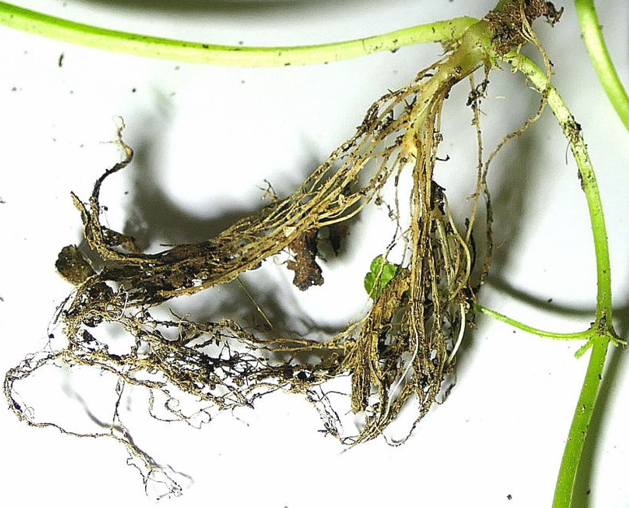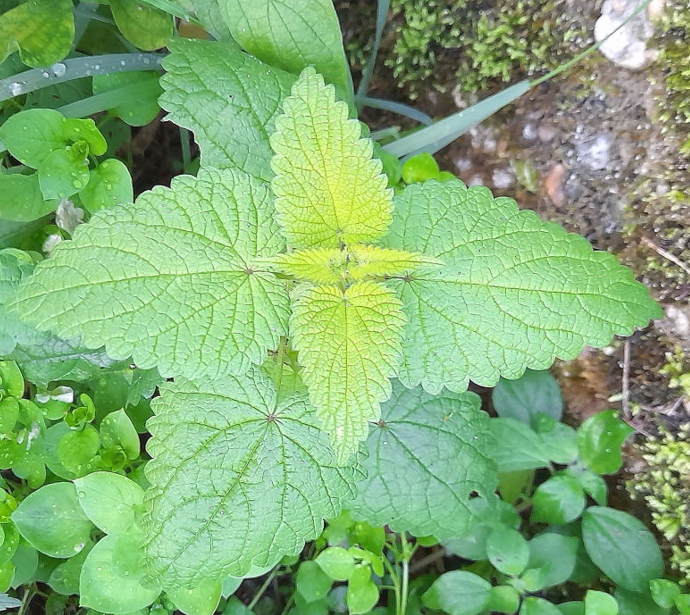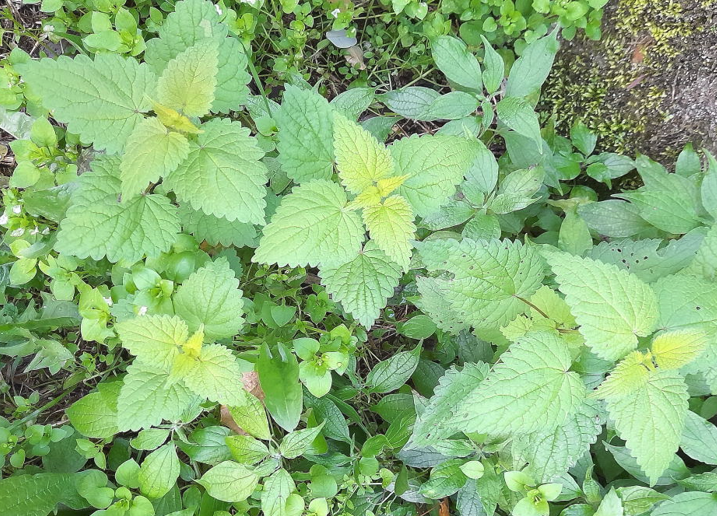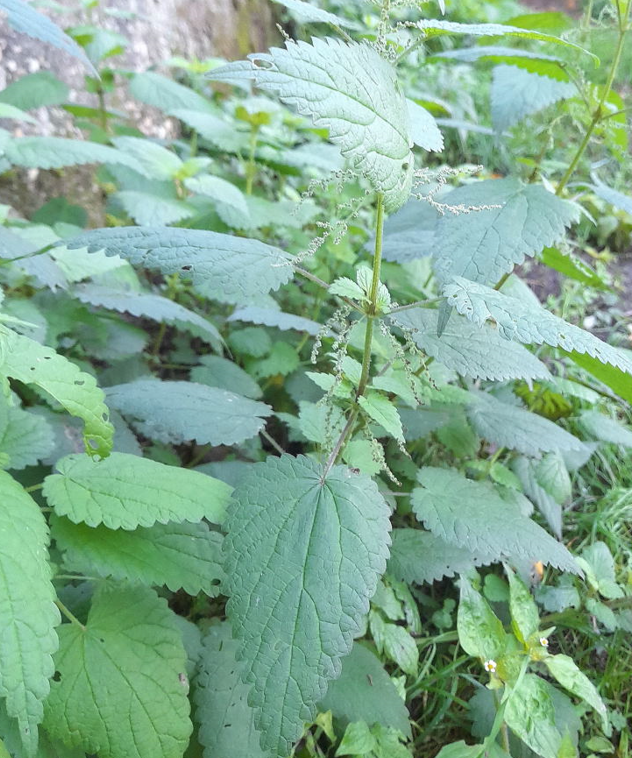| "Urtica dioica studies" by Whiz35 (11840 pt) | 2022-Nov-22 18:54 |
Review Consensus: 10 Rating: 10 Number of users: 1
| Evaluation | N. Experts | Evaluation | N. Experts |
|---|---|---|---|
| 1 | 6 | ||
| 2 | 7 | ||
| 3 | 8 | ||
| 4 | 9 | ||
| 5 | 10 |
Compendium of the most significant studies with reference to properties, intake, effects.
Esposito S, Bianco A, Russo R, Di Maro A, Isernia C, Pedone PV. Therapeutic Perspectives of Molecules from Urtica dioica Extracts for Cancer Treatment. Molecules. 2019 Jul 29;24(15):2753. doi: 10.3390/molecules24152753.
Abstract. A large range of chronic and degenerative diseases can be prevented through the use of food products and food bioactives. This study reports the health benefits and biological activities of the Urtica dioica (U. dioica) edible plant, with particular focus on its cancer chemopreventive potential. Numerous studies have attempted to investigate the most efficient anti-cancer therapy with few side effects and high toxicity on cancer cells to overcome the chemoresistance of cancer cells and the adverse effects of current therapies. In this regard, natural products from edible plants have been assessed as sources of anti-cancer agents. In this article, we review current knowledge from studies that have examined the cytotoxic, anti-tumor and anti-metastatic effects of U. dioica plant on several human cancers. Special attention has been dedicated to the treatment of breast cancer, the most prevalent cancer among women and one of the main causes of death worldwide. The anti-proliferative and apoptotic effects of U. dioica have been demonstrated on different human cancers, investigating the properties of U. dioica at cellular and molecular levels. The potent cytotoxicity and anti-cancer activity of the U. dioica extracts are due to its bioactive natural products content, including polyphenols which reportedly possess anti-oxidant, anti-mutagenic and anti-proliferative properties. The efficacy of this edible plant to prevent or mitigate human cancers has been demonstrated in laboratory conditions as well as in experimental animal models, paving the way to the development of nutraceuticals for new anti-cancer therapies.
Pinelli P, Ieri F, Vignolini P, Bacci L, Baronti S, Romani A. Extraction and HPLC analysis of phenolic compounds in leaves, stalks, and textile fibers of Urtica dioica L. J Agric Food Chem. 2008 Oct 8;56(19):9127-32. doi: 10.1021/jf801552d.
Abstract. In the present study the phenolic composition of leaves, stalks, and textile fiber extracts from Urtica dioica L. is described. Taking into account the increasing demand for textile products made from natural fibers and the necessity to create sustainable "local" processing chains, an Italian project was funded to evaluate the cultivation of nettle fibers in the region of Tuscany. The leaves of two nettle samples, cultivated and wild (C and W), contain large amounts of chlorogenic and 2- O-caffeoylmalic acid, which represent 71.5 and 76.5% of total phenolics, respectively. Flavonoids are the main class in the stalks: 54.4% of total phenolics in C and 31.2% in W samples. Anthocyanins are second in quantitative importance and are present only in nettle stalks: 28.6% of total phenolics in C and 24.4% in W extracts. Characterization of phenolic compounds in nettle extracts is an important result with regard to the biological properties (antioxidant and antiradical) of these metabolites for their possible applications in various industrial activities, such as food/feed, cosmetics, phytomedicine, and textiles.

Upton, R. (2013). Stinging nettles leaf (Urtica dioica L.): Extraordinary vegetable medicine. Journal of herbal medicine, 3(1), 9-38.
Abstract. The efficacy and safety of herbal medicines are dependent upon the standards by which they are made and our knowledge base when prescribing them. Stinging nettles is a staple among Western herbalists and is widely used as a vegetable green, juice, tea, and freeze dried products, predominantly as a blood nourishing tonic and for seasonal rhinitis. The following botanical profile is excerpted from the American Herbal Pharmacopoeia® and Therapeutic Compendium.
Đurović, S., Zeković, Z., Šorgić, S., Popov, S., Vujanović, M., & Radojković, M. (2018). Fatty acid profile of stinging nettle leaves: application of modern analytical procedures for sample preparation and analysis. Analytical Methods, 10(9), 1080-1087.
Abstract. Stinging nettle is a perennial plant with significant biological activity and a long history of application in folk medicine and as food. Its activity is ascribed to its chemical composition. Its leaves contain different classes of compounds including fatty acids. This study deals with the isolation of fatty acids in stinging nettle leaves using a rapid extraction system for solid–liquid extraction (Soxtherm) with petroleum ether as the solvent. The obtained results indicate that the saturated fatty acids are more abundant than unsaturated fatty acids. The most abundant fatty acids are C12 : 0 (20.94%, 348.07 μg g−1), C16 : 0 (18.57%, 309.06 μg g−1), and C18 : 1 (13.16%, 219.44 μg g−1), whereas the fatty acid with the lowest content is C17 : 1 (0.13%, 2.20 μg g−1). Prior to analysis, the method is validated to obtain accurate and precise results. The limit of detection and limit of quantification are 0.012–0.038% and 1.67–7.03%, whereas the precision and accuracy are 83–126% and 1.67–7.03%, respectively. The validation parameters are >0.999, 0.011–0.032%, 0.012–0.038%, 1.67–7.03%, 83–126%, 0.22–5.24%, and 0.38–6.94% for linearity, limit of detection, limit of quantitation, precision, accuracy, inter-day precision, and intra-day precision, respectively, confirming the suitability of this method for fatty acid analysis.
Gülçin I, Küfrevioglu OI, Oktay M, Büyükokuroglu ME. Antioxidant, antimicrobial, antiulcer and analgesic activities of nettle (Urtica dioica L.). J Ethnopharmacol. 2004 Feb;90(2-3):205-15. doi: 10.1016/j.jep.2003.09.028.
Abstract. In this study, water extract of nettle (Urtica dioica L.) (WEN) was studied for antioxidant, antimicrobial, antiulcer and analgesic properties. The antioxidant properties of WEN were evaluated using different antioxidant tests, including reducing power, free radical scavenging, superoxide anion radical scavenging, hydrogen peroxide scavenging, and metal chelating activities. WEN had powerful antioxidant activity. The 50, 100 and 250 microg amounts of WEN showed 39, 66 and 98% inhibition on peroxidation of linoleic acid emulsion, respectively, while 60 microg/ml of alpha-tocopherol, exhibited only 30% inhibition. Moreover, WEN had effective reducing power, free radical scavenging, superoxide anion radical scavenging, hydrogen peroxide scavenging, and metal chelating activities at the same concentrations. Those various antioxidant activities were compared to standard antioxidants such as butylated hydroxyanisole (BHA), butylated hydroxytoluene (BHT), quercetin, and alpha-tocopherol. In addition, total phenolic compounds in the WEN were determined as pyrocatechol equivalent. WEN also showed antimicrobial activity against nine microorganisms, antiulcer activity against ethanol-induced ulcerogenesis and analgesic effect on acetic acid-induced stretching.

Otles S, Yalcin B. Phenolic compounds analysis of root, stalk, and leaves of nettle. ScientificWorldJournal. 2012;2012:564367. doi: 10.1100/2012/564367. Epub 2012 Apr 19.
Abstract. Types of nettles (Urtica dioica) were collected from different regions to analyze phenolic compounds in this research. Nettles are specially grown in the coastal part. According to this kind of properties, nettle samples were collected from coastal part of (Mediterranean, Aegean, Black sea, and Marmara) Turkey. Phenolic profile, total phenol compounds, and antioxidant activities of nettle samples were analyzed. Nettles were separated to the part of root, stalk, and leaves. Then, these parts of nettle were analyzed to understand the difference of phenolic compounds and amount of them. Nettle (root, stalk and leaves) samples were analyzed by using High-Performance Liquid Chromatography with Diode-Array Detection (HPLC-DAD) to qualitative and quantitative determination of the phenolic compounds. Total phenolic components were measured by using Folin-Ciocalteu method. The antioxidant activity was measured by using DPPH (2,2-diphenyl-1-picrylhydrazyl) which is generally used for herbal samples and based on single electron transfer (SET).
Di Sotto A, Mazzanti G, Savickiene N, Staršelskytė R, Baksenskaite V, Di Giacomo S, Vitalone A. Antimutagenic and antioxidant activity of a protein fraction from aerial parts of Urtica dioica. Pharm Biol. 2015 Jun;53(6):935-8. doi: 10.3109/13880209.2014.950386.
Abstract. Context: Urtica dioica L. (Urticaceae), stinging nettle, has been employed as a folklore remedy for a wide spectrum of ailments, including urinary disorders, prostatic hyperplasia, and liver diseases. It has been also used traditionally for cancer treatment. Object: To evaluate the potential chemopreventive properties of a protein fraction from the aerial part of Urtica dioica (namely UDHL30)....Discussion and conclusions: UDHL30 possesses antimutagenic and radical scavenging properties. Being 2AA a pro-carcinogenic agent, we hypothesize that the antimutagenicity of UDHL30 can be due to the inhibition of CYP450-isoenzymes, involved in the mutagen bioactivation. The radical scavenger ability could contribute to 2AA-antimutagenicity. These data encourage further studies in order to better define the potential usefulness of UDHL30 in chemoprevention.

Schulze-Tanzil G, de SP, Behnke B, Klingelhoefer S, Scheid A, Shakibaei M. Effects of the antirheumatic remedy hox alpha--a new stinging nettle leaf extract--on matrix metalloproteinases in human chondrocytes in vitro. Histol Histopathol. 2002 Apr;17(2):477-85. doi: 10.14670/HH-17.477.
Abstract. Inflammatory joint diseases are characterized by enhanced extracellular matrix degradation which is predominantly mediated by cytokine-stimulated upregulation of matrix metalloproteinase (MMP) expression. Besides tumour necrosis factor-alpha (TNF-alpha), Interleukin-1beta (IL-1beta) produced by articular chondrocytes and synovial macrophages, is the most important cytokine stimulating MMP expression under inflammatory conditions. Blockade of these two cytokines and their downstream effectors are suitable molecular targets of antirheumatic therapy. Hox alpha is a novel stinging nettle (Urtica dioica/Urtica urens) leaf extract used for treatment of rheumatic diseases. The aim of the present study was to clarify the effects of Hox alpha and the monosubstance 13-HOTrE (13-Hydroxyoctadecatrienic acid) on the expression of matrix metalloproteinase-1, -3 and -9 proteins (MMP-1, -3, -9). Human chondrocytes were cultured on collagen type-II-coated petri dishes, exposed to IL-1beta and treated with or without Hox alpha and 13-HOTrE. A close analysis by immunofluorescence microscopy and western blot analysis showed that Hox alpha and 13-HOTrE significantly suppressed IL-1beta-induced expression of matrix metalloproteinase-1, -3 and -9 proteins on the chondrocytes in vitro. The potential of Hox alpha and 13-HOTrE to suppress the expression of matrix metalloproteinases may explain the clinical efficacy of stinging nettle leaf extracts in treatment of rheumatoid arthritis. These results suggest that the monosubstance 13-HOTrE is one of the more active antiinflammatory substances in Hox alpha and that Hox alpha may be a promising remedy for therapy of inflammatory joint diseases.

Steers WD. 5alpha-reductase activity in the prostate. Urology. 2001 Dec;58(6 Suppl 1):17-24; discussion 24. doi: 10.1016/s0090-4295(01)01299-7.
Abstract. The prostate gland depends on androgen stimulation for its development and growth. However, testosterone is not the major androgen responsible for growth of the prostate. Testosterone is converted to dihydrotestosterone (DHT) by the enzyme Delta(4), 3 ketosteroid, 5alpha-reductase in prostatic stromal and basal cells. DHT is primarily responsible for prostate development and the pathogenesis of benign prostatic hyperplasia (BPH). Inhibitors of 5alpha-reductase reduce prostate size by 20% to 30%. This reduction in glandular tissue is achieved by the induction of apoptosis, which is histologically manifested by ductal atrophy. Inhibition also diminishes the number of blood vessels in the prostate because of a reduction in vascular-derived endothelial growth factor. 5alpha-Reductase occurs as 2 isozymes, type 1 and type 2, with the prostate expressing predominantly the type-2 isozyme, and the liver and skin expressing primarily the type-1 isozyme. Patients have been identified with deficiencies in the type-2 5alpha-reductase, but not type 1. Knockout mice with the type-2 5alpha-reductase demonstrate a phenotype similar to that seen in men with 5alpha-reductase deficiency. Type-1 5alpha-reductase knockout male mice are phenotypically normal. Enzymatic activity for 5alpha-reductase or immunohistochemical detection has been noted in other genitourinary tissues, such as the epididymis, testes, gubernaculum, and corporal cavernosal tissue. Preputial skin predominately expresses the type-1 5alpha-reductase, whereas stromal cells in the seminal vesicle also express type-2 isozyme. However, epithelial cells in the epididymis, but not surrounding stroma, express type-1 5alpha-reductase. In addition to influencing prostatic growth, 5alpha-reductase also influences the expression of neuronal nitric-oxide synthase in the corpus cavernosum. The contribution of DHT in the serum, which is partially derived from type-1 5alpha-reductase in the liver and the small amount of type-1 5alpha-reductase in the prostate, may play a role in maintaining prostatic enlargement. Thus, in an effort to increase efficacy of treatment for BPH, clinical trials are under way using new drugs, such as GI-198745 (Glaxo-Wellcome, Research Triangle Park, NC), PNU 157706 (Pharmacia & Upjohn, Peapack, NJ), FR146687 (Fujisawa, Osaka, Japan), and LY 320236 (Lilly, Indianapolis, IN), which inhibit both the type-1 and type-2 5alpha-reductase.
Riehemann K, Behnke B, Schulze-Osthoff K. Plant extracts from stinging nettle (Urtica dioica), an antirheumatic remedy, inhibit the proinflammatory transcription factor NF-kappaB. FEBS Lett. 1999 Jan 8;442(1):89-94. doi: 10.1016/s0014-5793(98)01622-6.
Abstract. Activation of transcription factor NF-kappaB is elevated in several chronic inflammatory diseases and is responsible for the enhanced expression of many proinflammatory gene products. Extracts from leaves of stinging nettle (Urtica dioica) are used as antiinflammatory remedies in rheumatoid arthritis. Standardized preparations of these extracts (IDS23) suppress cytokine production, but their mode of action remains unclear. Here we demonstrate that treatment of different cells with IDS23 potently inhibits NF-kappaB activation. An inhibitory effect was observed in response to several stimuli, suggesting that IDS23 suppressed a common NF-kappaB pathway. Inhibition of NF-kappaB activation by IDS23 was not mediated by a direct modification of DNA binding, but rather by preventing degradation of its inhibitory subunit IkappaB-alpha. Our results suggests that part of the antiinflammatory effect of Urtica extract may be ascribed to its inhibitory effect on NF-kappaB activation.
| Evaluate |

